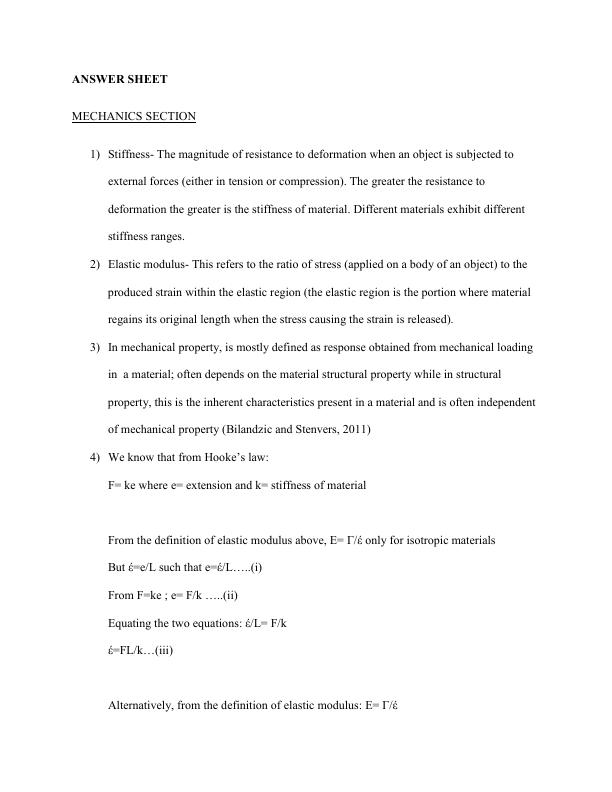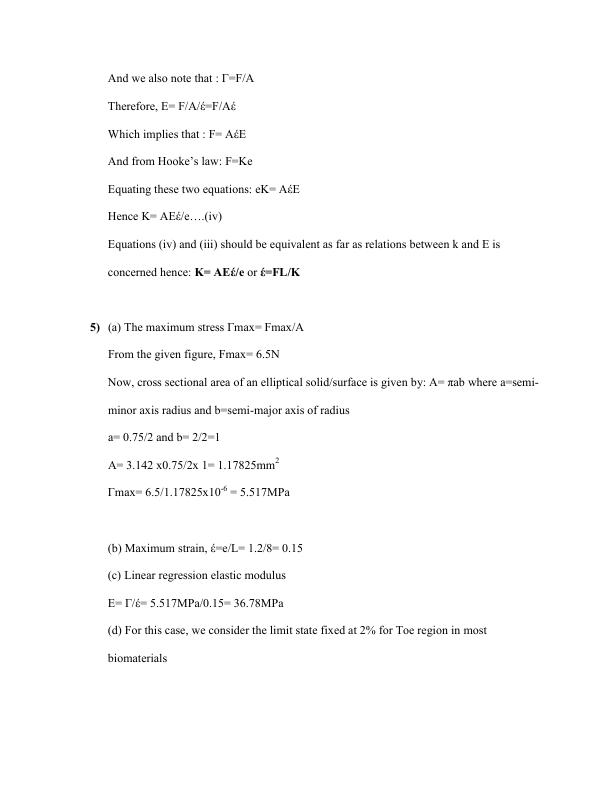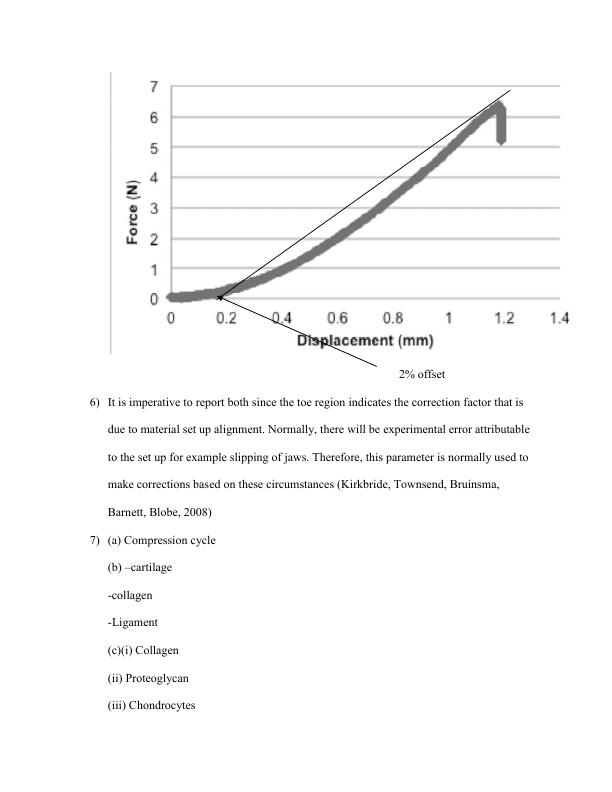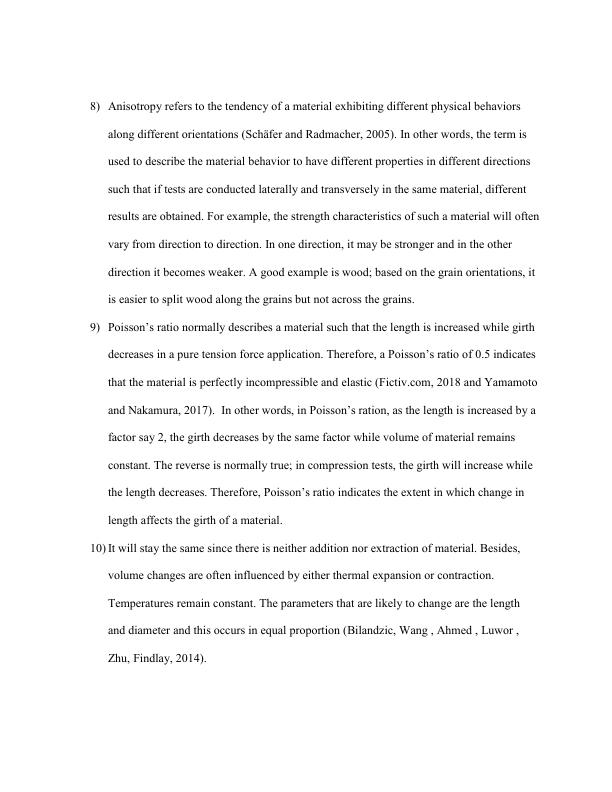Mechanical Properties of Materials and Testing Methods
Midterm Exam for BE 404/504 Fall 2018, due on November 29, 2018. The exam consists of multiple questions related to stiffness, elastic modulus, material property, structural property, and force-displacement calculations.
Added on 2023-05-29
About This Document
This text discusses the mechanical properties of materials, including stiffness, elastic modulus, anisotropy, and Poisson's ratio. It also covers different testing methods for materials and their challenges, such as the difficulty in maintaining visibility during tests. Additionally, the text explores structure-function relationships at multiple scales, including the behavior of collagen fibers in the meniscus of the knee joint. The output is in JSON format.
Mechanical Properties of Materials and Testing Methods
Midterm Exam for BE 404/504 Fall 2018, due on November 29, 2018. The exam consists of multiple questions related to stiffness, elastic modulus, material property, structural property, and force-displacement calculations.
Added on 2023-05-29
End of preview
Want to access all the pages? Upload your documents or become a member.




